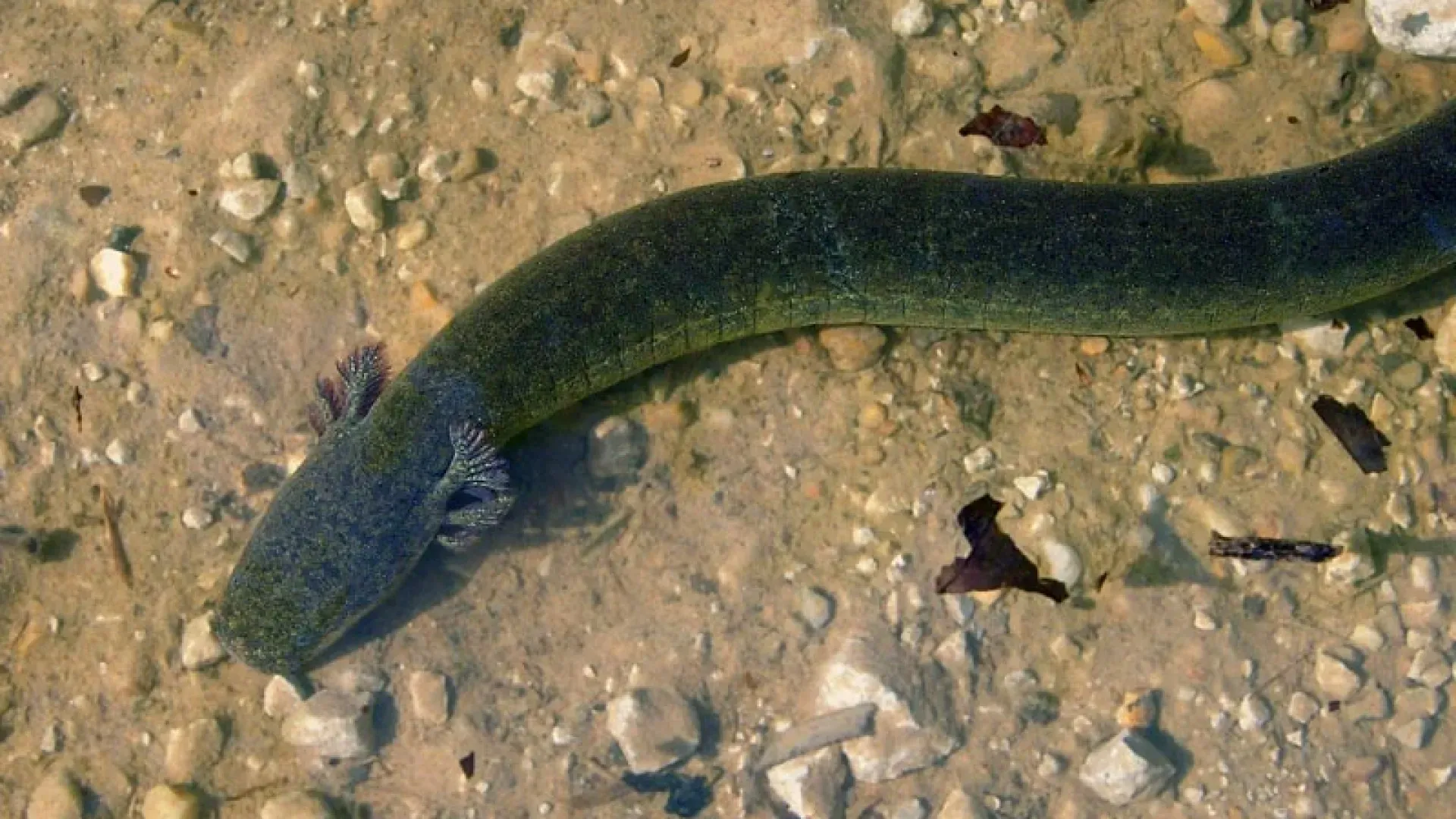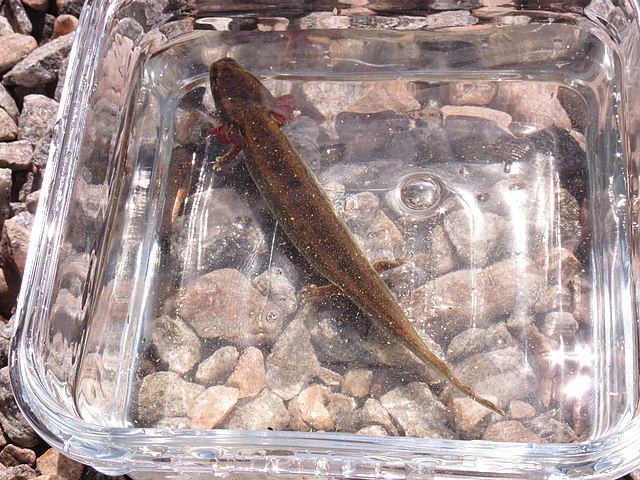World Wildlife Conservation Day: Western Lesser Siren
As declared by the United Nations in 2013, World Wildlife Day is March 3rd, 2025, with the theme being Wildlife Conservation Finance. This day also marks the date of the signing of the Convention on International Trade in Endangered Species of Wild Fauna and Flora (CITES) in 1973. In celebration of March 3rd, it only makes sense to highlight one of Michigan’s species of concern: the western lesser siren (Siren intermedia nettingi).
History
The western lesser siren is an eel-like aquatic salamander species in Michigan. The siren name originates from the characters in Greek mythology using songs to entrap people. According to the Missouri Department of Conservation, this salamander species makes a yelping sound when captured and clicks when defending their territory, leading to the siren name. Due to their lives being aquatic and burrowing into the mud at night, not much is known about this species. The lesser siren was first recorded and verified in 1932 by scientists, according to the Animal Diversity Web.
Current Status
The IUCN Red List classifies this salamander as a species of least concern due to its large distribution. According to the Saint Louis Zoo, populations of this amphibian extend from the central United States to northeastern Mexico. This species is currently considered a species of special concern according to the Michigan DNR residing in southwest Michigan, however, the last confirmed sighting in the state was in 2022.
Characteristics
This salamander species ranges from 7 to 20 inches, with branch-like external gills and a flattened tail. The external gills are not common in other amphibians as this is characteristic often lost during metamorphosis according to the Saint Louis Zoo. Additionally, there are grooves along the side of the body, which are also lost during metamorphosis in most amphibians but aid this species in its resilience against drying out. The overall color pattern ranges from gray to brown with spots on some individuals. Being an aquatic species, the western lesser siren has no hind legs, with small front legs and only 4 digits. Breeding typically begins in May and June, with females laying up to 700 eggs in their nests. The Indiana Herp Atlas estimates that after hatching, the larval stage can last two to three years, in which there is lighter coloration around the head and striping going down the back.
Along with many other species in Michigan, there are often look-alikes that can confuse the average eye. Mudpuppies can be confused with this species as they are similarly an aquatic amphibian, however, they have four legs, making this an easy way to differentiate. This species is slimy with external gills similar to the siren; however, they tend to be larger. Neither of these species is poisonous to touch, which is often a myth spread due to their slimy exterior.
Conservation Efforts
This species is often found in warm water reservoirs or slow streams where aquatic plants are present. The salamander preys on aquatic insects, crawfish, and earthworms, according to the Hoosier Herpetological Society. Due to their special status of concern, the Michigan Natural Features Inventory warns against using pesticides for fish in areas where these are known to be present. Although their tendency to come out at night makes studying them more difficult, the most successful method of surveying populations of the western lesser siren has been attributed to the use of electrofishing. This survey technique can reach into the muddy substrate where the amphibians are located during the day, allowing them to then become visible for studying. Studies have revealed the species' ability to breathe through either lungs or gills and use mucus secretions when burrowing into the substrate during the day, allowing the species to prevail during dry periods, according to the Indiana Herp Atlas. During the night is when the species emerges for feeding, making human contact limited.
While Michigan’s amphibians are not dangerous to touch, it is important to consider your cleanliness before touching them. If there are traces of insect repellent, sunscreen, or soap on the hands, the chemicals can be soaked into the skin of the animals, causing harm. It is best not to touch or pick up amphibians if you suspect any of these chemicals remain on your hands.
The biggest threats to salamanders in the state include habitat loss, pollution, and the pet trade. Along with other amphibian species, the lesser siren is an indicator species due to its sensitivity to changes in its environment, including high levels of pollutants. There are regulations for reptiles and salamanders in the fishing digest, however, this species is not authorized to be taken or possessed in Michigan according to the 2024 digest. If caught while fishing, the Missouri Department of Conservation encourages the immediate release of these amphibians due to declining populations in certain areas of the natural range.
Learn More
Both salamanders and lizards can be reported at MIHerpAtlas.org to aid in the monitoring of populations across the state. Users of the Michigan DNR Eyes in the Field can also make reports for this species. To find out more information about lizards and salamanders of Michigan, visit the Michigan DNR webpage discussing adaptations to conservation. Our On the Ground (OTG ) program works with volunteer stewards across the state to improve habitat for wildlife. Keep your eye on our OTG website for upcoming events like our annual river clean-ups.





